The Licorice Gourami is an interesting little fish with a unique appearance. Its scientific name Parosphromenus deissneri honors the German aquarist Arthur Deissner who first collected this species. “Parosphromenus” comes from Greek, meaning “almost eyebrow”, referring to the fish’s eyebrow-like marking above its eyes.
Table of Contents
These fish prefer to dwell near the bottom of their habitats, sifting through leaf litter for tiny invertebrates to eat. In the aquarium, they do best with a sand substrate, plenty of hiding places among driftwood and plants, and open areas for swimming. Licorice Gouramis are peaceful and a bit shy. They get along with other small, non-aggressive fish.
Licorice Gouramis belong to the gourami family Osphronemidae. Their closest relatives are other members of the Parosphromenus genus, often called “licorice gouramis”. There are currently 20 recognized Parosphromenus species. In the aquarium trade, P. deissneri is sometimes labeled as “Chocolate Gourami”.
Wild Licorice Gouramis inhabit slow-moving, acidic blackwater streams in peat swamp forests of Borneo and Sumatra. The water is stained brown from tannins and humic substances released by decaying plant matter. Recreating these conditions in the aquarium will help these fish thrive.
Parosphromenus deissneri was scientifically described in 1955 based on specimens collected from the island of Bangka off the east coast of Sumatra, Indonesia. Since then, its known natural range has expanded to include southern Sumatra, Belitung island, and parts of Indonesian Borneo.
In a planted tank, Licorice Gouramis will nibble on soft algae and biofilm. However, their main diet should consist of small live or frozen foods like baby brine shrimp, daphnia, and finely chopped bloodworms. They may also accept high-quality nano pellets or powdered foods.
Males grow slightly larger than females, reaching about 1.6 inches long. During courtship, males display intensified colors, spreading their fins and performing a “headstand” to entice females. Eggs are attached to the underside of leaves. The male takes on parental duties, guarding the eggs until they hatch.
I find the Licorice Gourami fascinating for its specialized adaptations to blackwater habitats and parental care behaviors. Its bold, contrasting color pattern is striking and attractive. Although this fish is sensitive to water conditions and not beginner-friendly, it can make a rewarding aquarium inhabitant for experienced hobbyists.
A scientific journal article titled “Two new Parosphromenus species (Teleostei: Osphronemidae) from Bangka Island, Indonesia” was published in 2018. It used DNA data to examine Parosphromenus species relationships and described two new species, illustrating the ongoing taxonomic work in this genus.
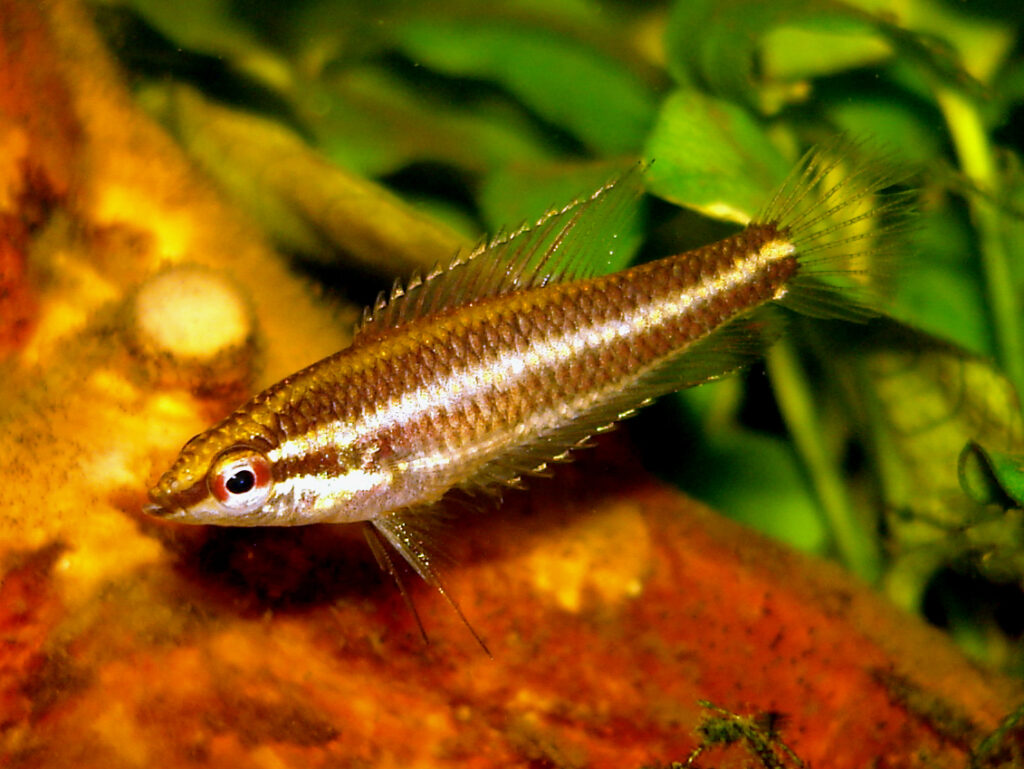
Licorice Gourami Key Information
The Licorice Gourami (Parosphromenus deissneri) is a striking fish with a unique color pattern. Its dark brown to black body is adorned with an iridescent blue-green lateral stripe and red highlights on the fins. The contrast between the dark base color and vibrant markings makes this fish stand out in a planted aquarium.
| Family | Osphronemidae (gouramis) |
| Origin | Borneo, Sumatra, Bangka Island (Indonesia) |
| Price | $10-$20 per fish |
| Common Names | Licorice Gourami, Chocolate Gourami, Deissner’s Licorice Gourami |
| Variants | None |
| Ideal Tank Size | Minimum 10 gallons, preferably 20+ gallons |
| Water Parameters | Temperature: 72-79°F (22-26°C), pH: 3.0-6.5 (highly acidic), Hardness: 18-90 ppm (very soft) |
| Lifespan | 3-5 years |
| Full Size | 1.6 inches (4 cm) |
| Natural Environment | Slow-moving, acidic blackwater streams in peat swamp forests |
| Behavior | Peaceful, shy, bottom-dwelling |
| Habitat Preference | Dense vegetation, leaf litter, driftwood |
| Aquarium Decoration | Sand substrate, driftwood, live plants (e.g., Java Moss, Cryptocoryne), leaf litter |
| Ideal Tank Mates | Small, peaceful fish (e.g., Boraras, Sundadanio, small rasboras) |
| Fish to Avoid | Large, aggressive, or fast-swimming fish that may outcompete or stress Licorice Gouramis |
| Best Foods/Diet | Small live or frozen foods (baby brine shrimp, daphnia, finely chopped bloodworms), high-quality nano pellets or powder |
| Disease | Susceptible to common fish diseases if water quality is poor; maintain pristine conditions |
| Sex-switch | Not observed |
| Gender Differences | Males are slightly larger and more colorful, especially during breeding |
| Care Level | Intermediate to Advanced (sensitive to water conditions) |
| Breeding Level | Intermediate to Advanced (requires specific water parameters and tank setup) |
Ideal Tank Mates for Licorice Gourami
When selecting tank mates for Licorice Gouramis, it’s essential to choose fish that share similar water parameters, temperament, and habitat preferences. Ideal tank mates should be peaceful, small, and thrive in the same acidic, soft water conditions. They should also be slow-moving and not compete for food or space with the shy Licorice Gouramis.
Here are 10 ideal tank mates for Licorice Gouramis, each with their unique characteristics and compatibility reasons:
1. Pygmy Corydoras (Corydoras pygmaeus)
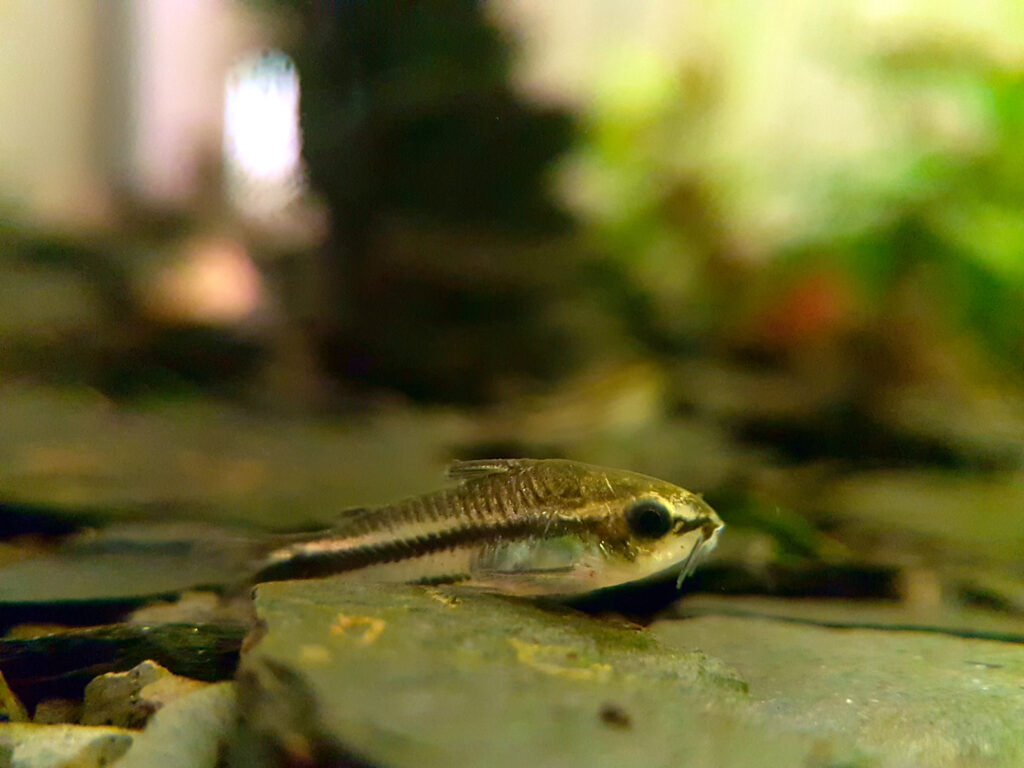
Pygmy Corydoras are perfect tank mates for Licorice Gouramis due to their small size, peaceful nature, and bottom-dwelling habits. These tiny catfish help keep the substrate clean and provide a charming addition to the lower levels of the tank.
| Common/Market Names | Pygmy Cory, Dwarf Corydoras |
| Price Range | $2-$4 per fish |
| Care Level | Easy |
| Behavior | Peaceful, schooling, bottom-dwelling |
| Life Span | 3-5 years |
| Max Size | 1 inch (2.5 cm) |
2. Ember Tetra (Hyphessobrycon amandae)
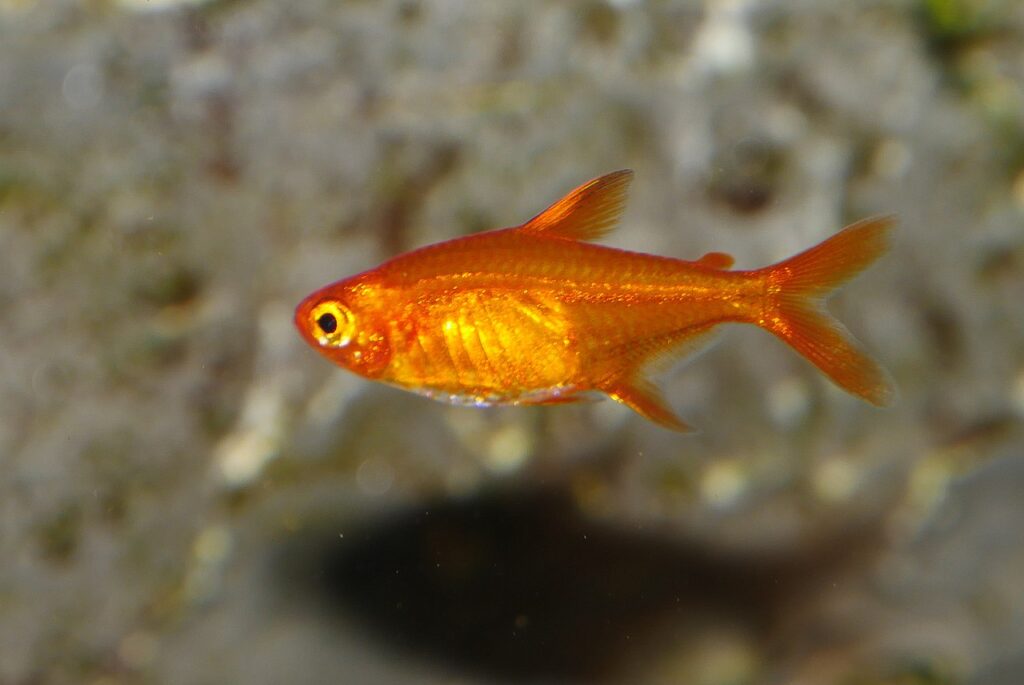
Ember Tetras are small, colorful, and peaceful, making them an excellent choice for a Licorice Gourami tank. Their striking red-orange color complements the dark tones of the Licorice Gourami, creating a visually appealing aquarium.
| Common/Market Names | Ember Tetra, Amanda’s Tetra |
| Price Range | $2-$4 per fish |
| Care Level | Easy |
| Behavior | Peaceful, schooling, mid-water dwelling |
| Life Span | 2-4 years |
| Max Size | 0.8 inches (2 cm) |
3. Chili Rasbora (Boraras brigittae)
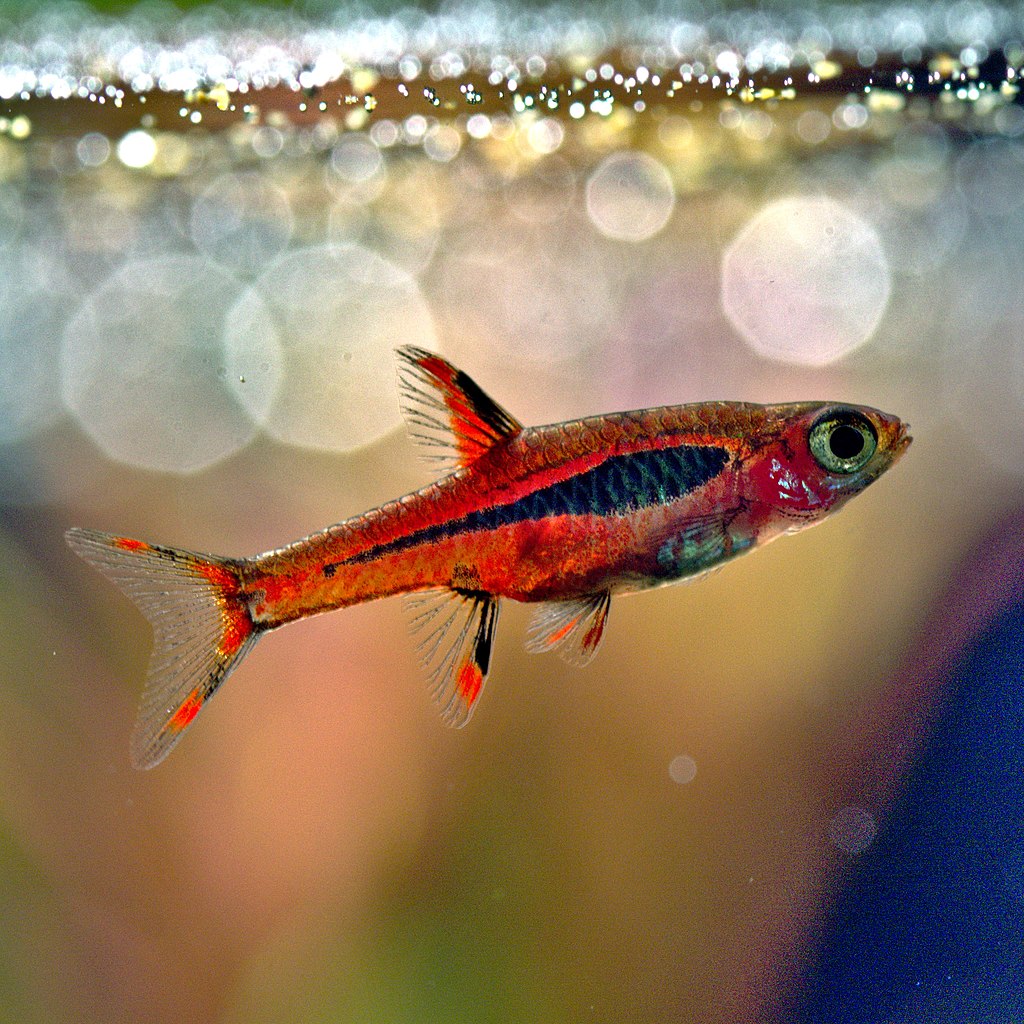
Chili Rasboras are tiny, vibrant fish that thrive in the same water conditions as Licorice Gouramis. Their small size and peaceful temperament make them perfect tank mates, as they won’t compete for food or space.
| Common/Market Names | Chili Rasbora, Mosquito Rasbora |
| Price Range | $2-$4 per fish |
| Care Level | Moderate |
| Behavior | Peaceful, schooling, mid-water dwelling |
| Life Span | 2-4 years |
| Max Size | 0.7 inches (1.8 cm) |
4. Celestial Pearl Danio (Danio margaritatus)
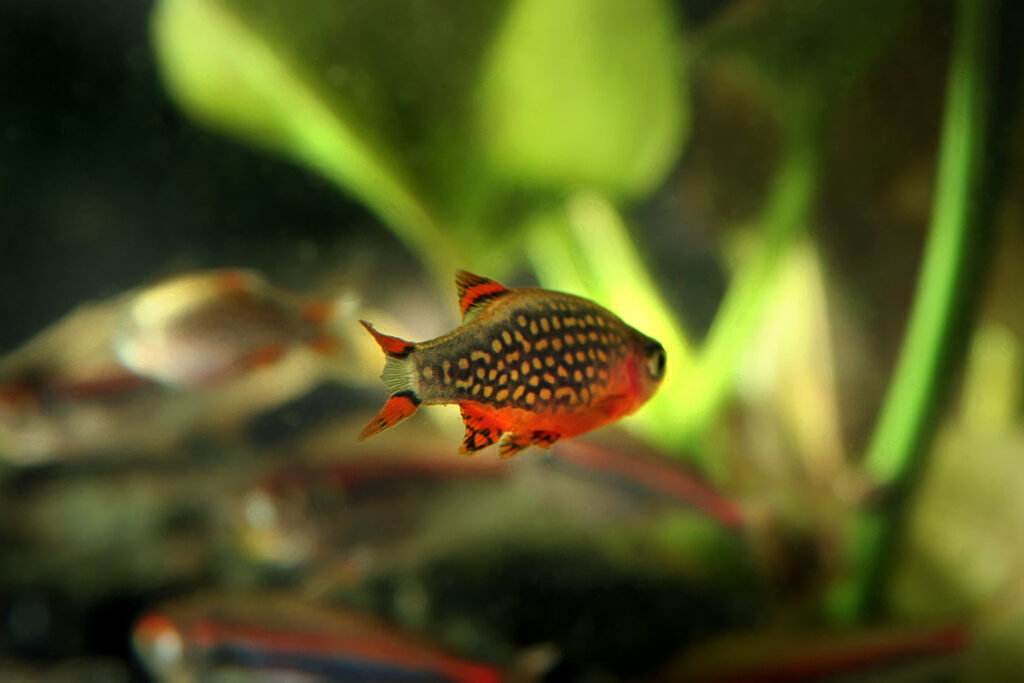
Celestial Pearl Danios are small, peaceful, and stunningly beautiful. Their unique spotted pattern and iridescent colors make them a captivating addition to a Licorice Gourami tank.
| Common/Market Names | Celestial Pearl Danio, Galaxy Rasbora |
| Price Range | $4-$6 per fish |
| Care Level | Moderate |
| Behavior | Peaceful, schooling, mid-water dwelling |
| Life Span | 3-5 years |
| Max Size | 1 inch (2.5 cm) |
5. Lambchop Rasbora (Trigonostigma espei)
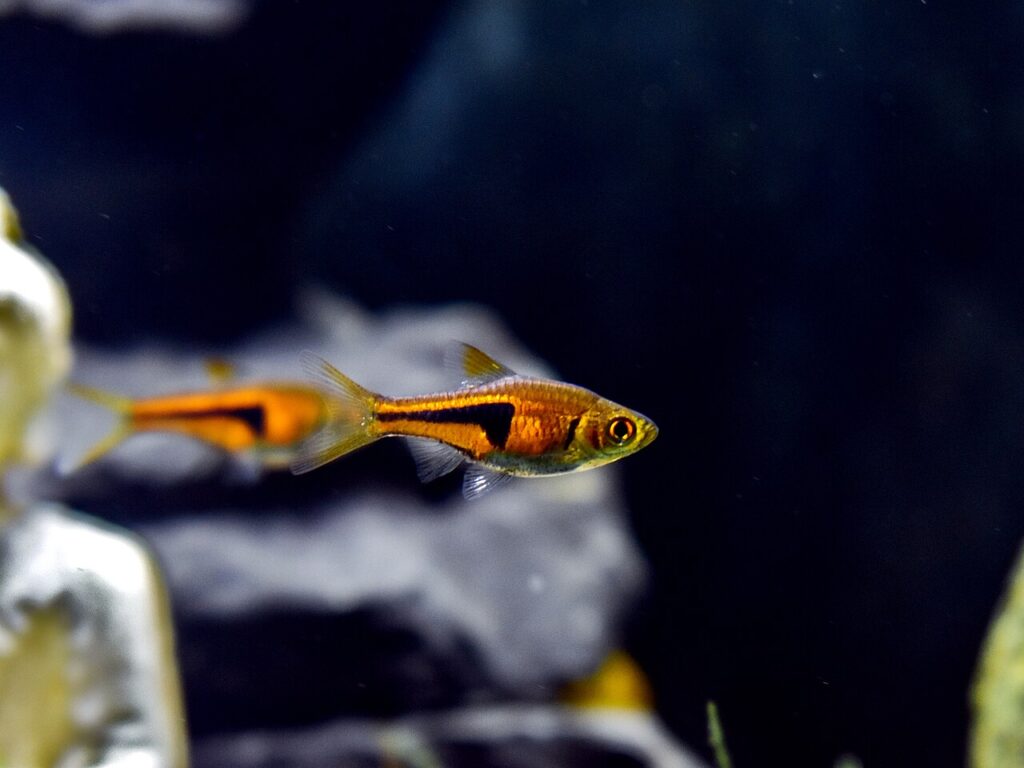
Lambchop Rasboras are slender, attractive fish that share similar water preferences with Licorice Gouramis. Their unique shape and peaceful nature make them an interesting and compatible tank mate.
| Common/Market Names | Lambchop Rasbora, False Harlequin |
| Price Range | $2-$4 per fish |
| Care Level | Easy |
| Behavior | Peaceful, schooling, mid-water dwelling |
| Life Span | 3-5 years |
| Max Size | 1.2 inches (3 cm) |
6. Pygmy Hatchetfish (Carnegiella myersi)
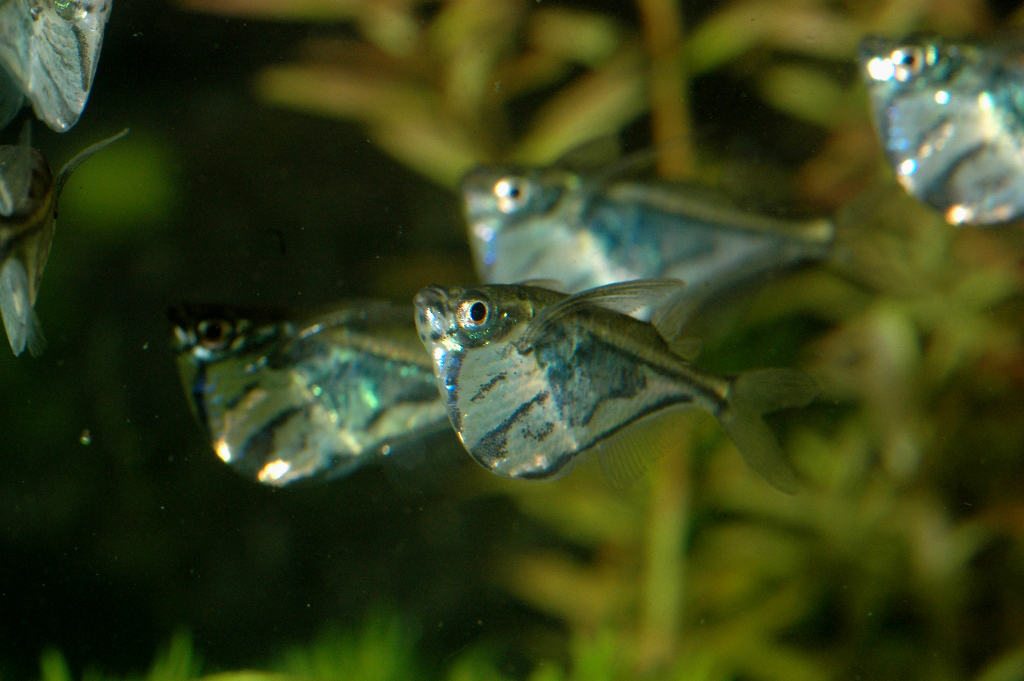
Pygmy Hatchetfish are small, unique fish that occupy the top level of the aquarium. Their compatibility with Licorice Gouramis lies in their peaceful nature and preference for similar water conditions.
| Common/Market Names | Pygmy Hatchetfish, Myer’s Hatchetfish |
| Price Range | $4-$6 per fish |
| Care Level | Moderate |
| Behavior | Peaceful, schooling, top-dwelling |
| Life Span | 3-5 years |
| Max Size | 1 inch (2.5 cm) |
7. Dwarf Pencilfish (Nannostomus marginatus)
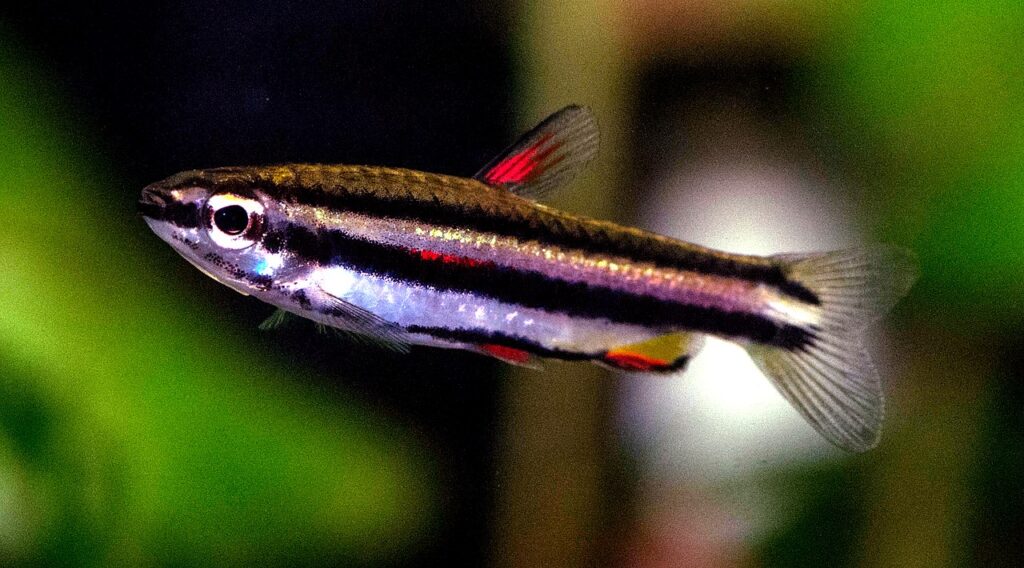
Dwarf Pencilfish are slender, peaceful, and well-suited for life alongside Licorice Gouramis. Their unique shape and schooling behavior add visual interest to the mid-water level of the tank.
| Common/Market Names | Dwarf Pencilfish, Coral Red Pencilfish |
| Price Range | $3-$5 per fish |
| Care Level | Moderate |
| Behavior | Peaceful, schooling, mid-water dwelling |
| Life Span | 3-5 years |
| Max Size | 1.2 inches (3 cm) |
8. Sundadanio Rasbora (Sundadanio axelrodi)
Sundadanio Rasboras are tiny, colorful fish that thrive in the same conditions as Licorice Gouramis. Their iridescent blue and red colors add a vibrant touch to the aquarium.
| Common/Market Names | Sundadanio Rasbora, Neon Rasbora |
| Price Range | $3-$5 per fish |
| Care Level | Moderate |
| Behavior | Peaceful, schooling, mid-water dwelling |
| Life Span | 2-4 years |
| Max Size | 0.8 inches (2 cm) |
9. Sparkling Gourami (Trichopsis pumila)
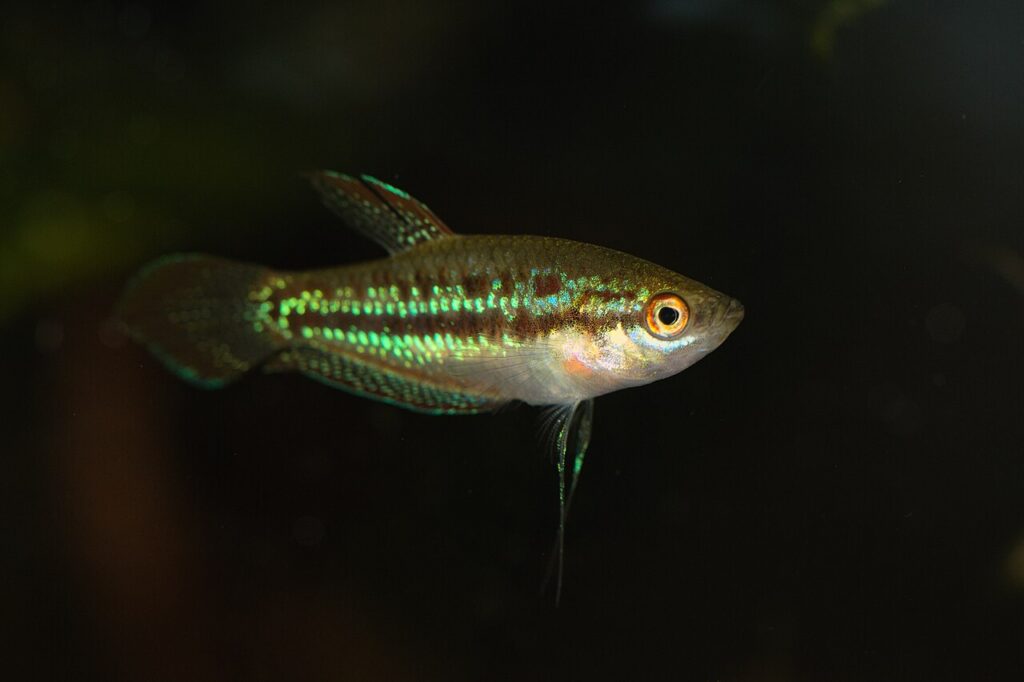
Sparkling Gouramis are small, peaceful labyrinth fish that share similar habitat preferences with Licorice Gouramis. Their unique croaking sound and shimmering scales make them an intriguing tank mate.
| Common/Market Names | Sparkling Gourami, Pygmy Gourami |
| Price Range | $4-$6 per fish |
| Care Level | Moderate |
| Behavior | Peaceful, territorial, mid-water dwelling |
| Life Span | 3-5 years |
| Max Size | 1.5 inches (4 cm) |
10. Clown Killifish (Epiplatys annulatus)
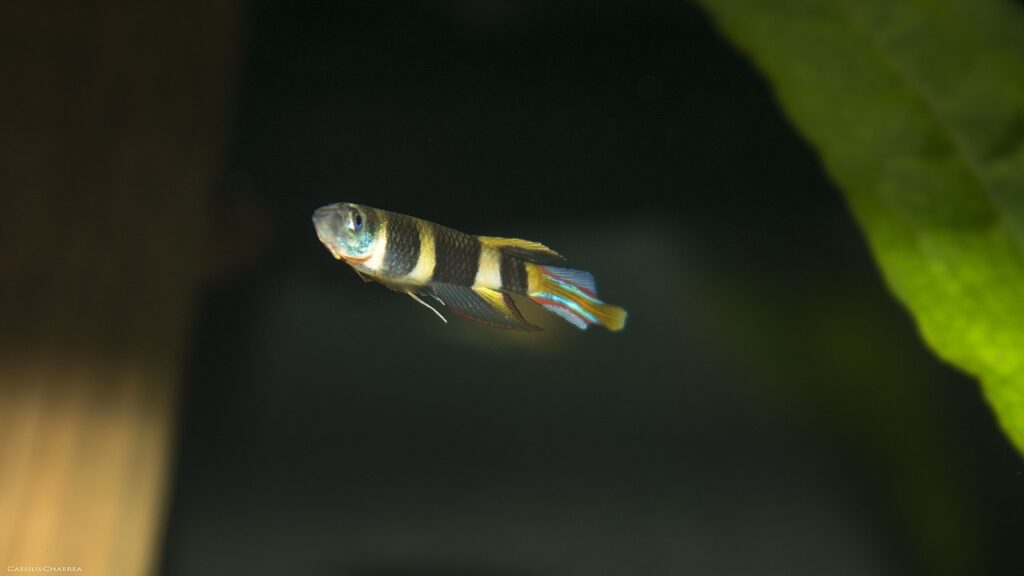
Clown Killifish are small, colorful, and well-adapted to the acidic, soft water conditions favored by Licorice Gouramis. Their unique patterning and active swimming behavior make them an eye-catching addition to the tank.
| Common/Market Names | Clown Killifish, Banded Panchax |
| Price Range | $5-$7 per fish |
| Care Level | Moderate |
| Behavior | Peaceful, active, top-dwelling |
| Life Span | 2-3 years |
| Max Size | 1.5 inches (4 cm) |
FAQs about Licorice Gourami
How many Licorice Gouramis should I keep together?
It’s best to keep Licorice Gouramis in pairs or small groups of 4-6 individuals. They are social fish that feel more secure when kept with others of their kind. However, avoid keeping too many males together as they may become territorial.
Can Licorice Gouramis be kept in a community tank?
Yes, Licorice Gouramis can be kept in a peaceful community tank with other small, non-aggressive fish that share similar water parameters. Avoid keeping them with larger, more active fish that may outcompete or stress them.
Are Licorice Gouramis difficult to feed?
Licorice Gouramis can be somewhat picky eaters, especially when first introduced to an aquarium. They prefer live or frozen foods like baby brine shrimp, daphnia, and finely chopped bloodworms. Gradually train them to accept high-quality nano pellets or powdered foods to ensure a balanced diet.
Do Licorice Gouramis need a heater?
Yes, Licorice Gouramis require a stable water temperature between 72-79°F (22-26°C). Use an aquarium heater to maintain this temperature range and avoid sudden fluctuations that can stress the fish.
How often should I perform water changes for Licorice Gouramis?
Perform weekly water changes of 10-20% to maintain excellent water quality. Licorice Gouramis are sensitive to pollutants, so regular water changes are essential. Use a siphon to remove debris from the substrate without disturbing the fish.
Can Licorice Gouramis be kept with shrimp?
Yes, Licorice Gouramis can be kept with small, peaceful shrimp species like Cherry Shrimp (Neocaridina davidi) or Bee Shrimp (Caridina cantonensis). The shrimp will help clean up uneaten food and debris, while the Licorice Gouramis won’t bother them.
Are Licorice Gouramis jumpers?
Yes, Licorice Gouramis are known to be jumpers, especially when startled or stressed. Make sure your aquarium has a tight-fitting lid to prevent them from jumping out. A lid will also help maintain stable water parameters by reducing evaporation.
How can I tell if my Licorice Gouramis are healthy?
Healthy Licorice Gouramis should have vibrant colors, clear eyes, and no visible signs of injury or disease. They should be active, swimming gracefully, and readily accepting food. If you notice any changes in appearance or behavior, check your water parameters and consult a fish veterinarian if necessary.
Can Licorice Gouramis be bred in captivity?
Yes, Licorice Gouramis can be bred in captivity, but it can be challenging. They require specific water parameters and a well-maintained tank with plenty of hiding spots. The breeding process involves the male building a bubble nest and defending the eggs and fry. Successful breeding requires patience, experience, and attention to detail.
How long do Licorice Gouramis live?
With proper care and optimal living conditions, Licorice Gouramis can live between 3-5 years in captivity. Factors such as genetics, diet, water quality, and tank maintenance all play a role in their longevity. Regular check-ups and addressing any health concerns promptly can help extend their lifespan.
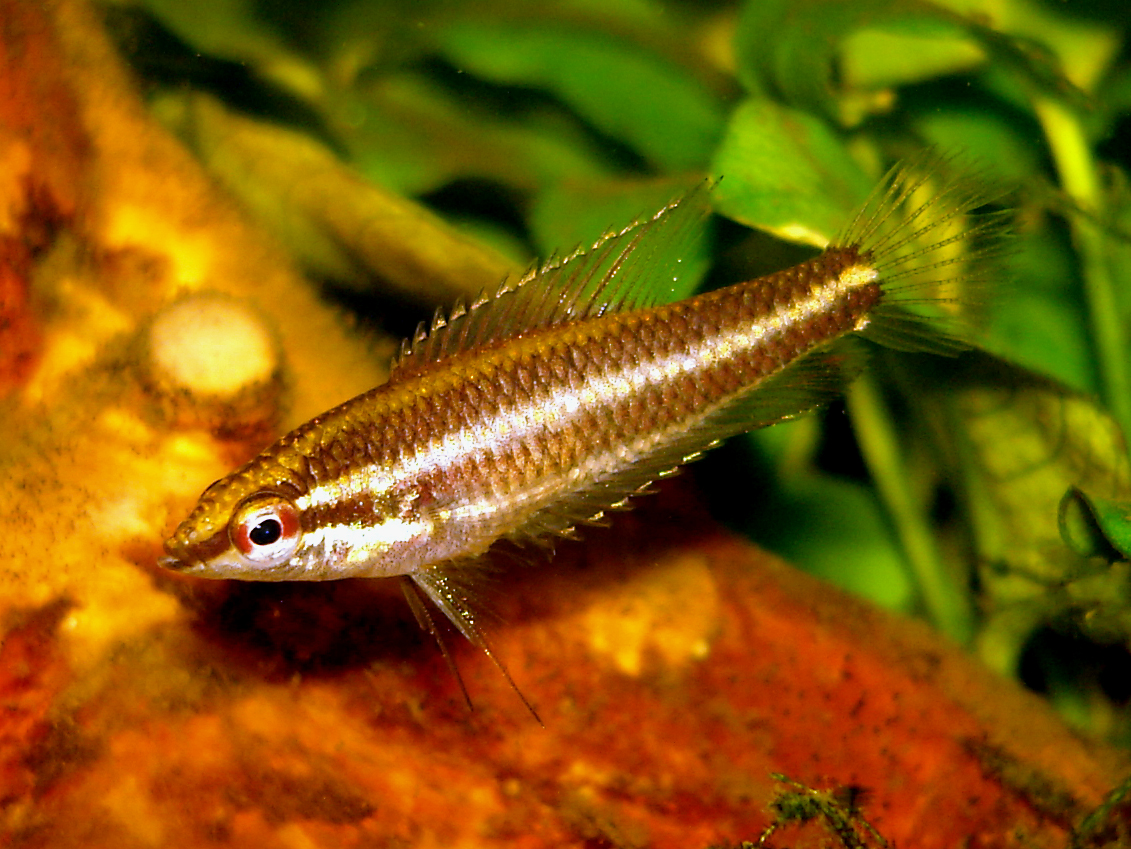
Leave a Reply